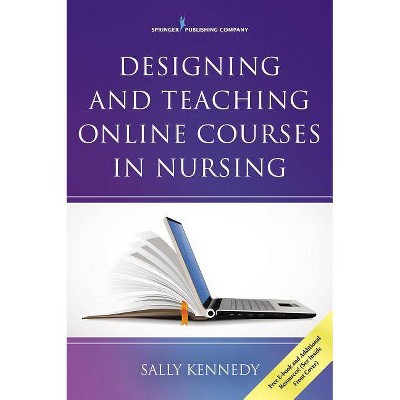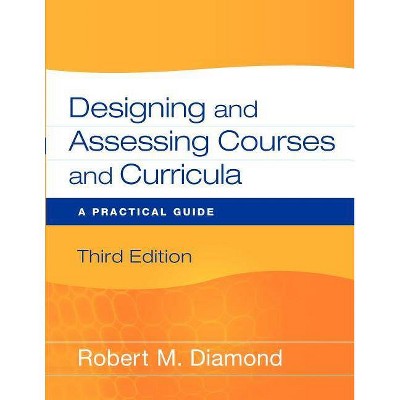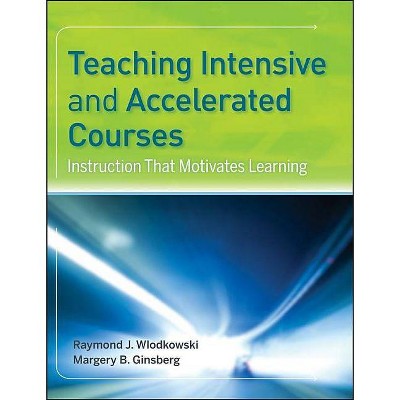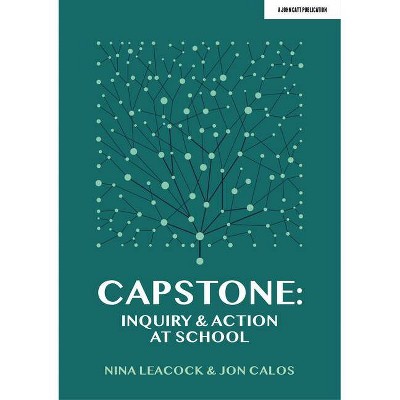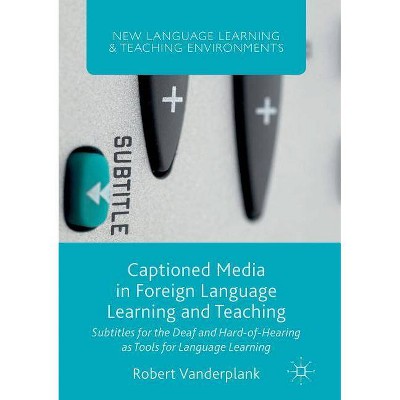Designing and Teaching Undergraduate Capstone Courses - by Robert C Hauhart & Jon E Grahe (Paperback)
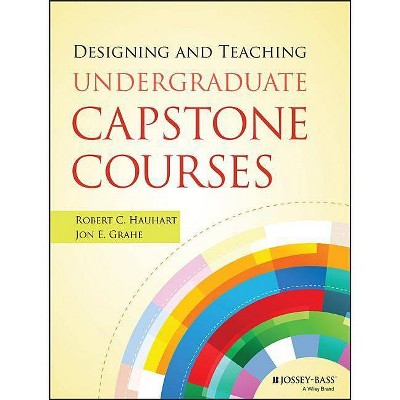
Similar Products
Products of same category from the store
AllProduct info
<p/><br></br><p><b> About the Book </b></p></br></br>"Enrich your students and the institution with a high-impact practiceDesigning and Teaching Undergraduate Capstone Courses is a practical, research-backed guide to creating a course that is valuable for both the student and the school. The book covers the design, administration, and teaching of capstone courses throughout the undergraduate curriculum, guiding departments seeking to add a capstone course, and allowing those who have one to compare it to others in the discipline. The ideas presented in the book are supported by regional and national surveys that help the reader understand what's common, what's exceptional, what works, and what doesn't within capstone courses. The authors also provide additional information specific to different departments across the curriculum, including STEM, social sciences, humanities, fine arts, education, and professional programs.Identified as a high-impact practice by the National Survey of Student Engagement (NSSE) and the Association of American Colleges and Universities' LEAP initiative, capstone courses culminate a student's final college years in a project that integrates and applies what they've learned. The project takes the form of a research paper, a performance, a portfolio, or an exhibit, and is intended to showcase the student's very best work as a graduating senior. This book is a guide to creating for your school or department a capstone course that ties together undergraduate learning in a way that enriches the student and adds value to the college experience. Understand what makes capstone courses valuable for graduating students Discover the factors that make a capstone course effective, and compare existing programs, both within academic disciplines and across institutions Learn administrative and pedagogical techniques that increase the course's success Examine discipline-specific considerations for design, administration, and instruction Capstones are generally offered in departmental programs, but are becoming increasingly common in general education as well. Faculty and administrators looking to add a capstone course or revive an existing one need to understand what constitutes an effective program. Designing and Teaching Undergraduate Capstone Courses provides an easily digested summary of existing research, and offers expert guidance on making your capstone course successful"--<p/><br></br><p><b> Book Synopsis </b></p></br></br><b>Enrich your students and the institution with a high-impact practice</b> <p><i>Designing and Teaching Undergraduate Capstone Courses</i> is a practical, research-backed guide to creating a course that is valuable for both the student and the school. The book covers the design, administration, and teaching of capstone courses throughout the undergraduate curriculum, guiding departments seeking to add a capstone course, and allowing those who have one to compare it to others in the discipline. The ideas presented in the book are supported by regional and national surveys that help the reader understand what's common, what's exceptional, what works, and what doesn't within capstone courses. The authors also provide additional information specific to different departments across the curriculum, including STEM, social sciences, humanities, fine arts, education, and professional programs.</p> <p>Identified as a high-impact practice by the National Survey of Student Engagement (NSSE) and the Association of American Colleges and Universities' LEAP initiative, capstone courses culminate a student's final college years in a project that integrates and applies what they've learned. The project takes the form of a research paper, a performance, a portfolio, or an exhibit, and is intended to showcase the student's very best work as a graduating senior. This book is a guide to creating for your school or department a capstone course that ties together undergraduate learning in a way that enriches the student and adds value to the college experience.</p> <ul> <li>Understand what makes capstone courses valuable for graduating students</li> <li>Discover the factors that make a capstone course effective, and compare existing programs, both within academic disciplines and across institutions</li> <li>Learn administrative and pedagogical techniques that increase the course's success</li> <li>Examine discipline-specific considerations for design, administration, and instruction</li> </ul> <p>Capstones are generally offered in departmental programs, but are becoming increasingly common in general education as well. Faculty and administrators looking to add a capstone course or revive an existing one need to understand what constitutes an effective program. <i>Designing and Teaching Undergraduate Capstone Courses</i> provides an easily digested summary of existing research, and offers expert guidance on making your capstone course successful.</p><p/><br></br><p><b> From the Back Cover </b></p></br></br><p><b>PRAISE FOR DESIGNING AND TEACHING UNDERGRADUATE CAPSTONE COURSES</b></p> <p>"This volume is a useful guide for educators involved in building and delivering courses that culminate the academic experience. But it is much more. It is a road map to successful faculty collaboration, curricular coherence, intentionality, and learning-centered teaching relevant at every undergraduate level. Hauhart and Grahe argue that the capstone is only as good as the curriculum it caps, and they offer practical, research-based guidance for anyone interested in improving courses at the beginning, middle, and end of college."<br /> <b>--Jean M. Henscheid, </b> fellow, National Resource Center for The First-Year Experience<sup>(R)</sup> and Students in Transition, and author, <i>Professing the Disciplines: An Analysis of Senior Seminars and Capstone Courses</i> "Faculty invented capstones to help students both integrate and apply their learning to challenging questions and problems. This intensely practical book shows faculty and departments how to match their goals for students' integrative learning with intentional and effective curricular practices. As a big proponent of capstone projects, I read this fine study with increasing interest and appreciation. It is a rich resource for all faculty members and leaders who want to create a more learning-intensive environment for today's diverse students."<br /> <b>--Carol Geary Schneider, </b> president, Association of American Colleges and Universities "Hauhart and Grahe have created an important, evidence-based resource here; if you are a faculty member who cares about undergraduate education, you need this book."<br /> <b>--R. Eric Landrum, </b> professor, Department of Psychology, Boise State University, and 2014 president, Society for the Teaching of Psychology (APA Division Two)</p><p/><br></br><p><b> About the Author </b></p></br></br><p><b>ROBERT C. HAUHART</b> is a professor and former chair of the Department of Society and Social Justice for Saint Martin's University in Lacey, Washington.</p> <p><b>JON E. GRAHE</b> is a professor of psychology at Pacific Lutheran University, western regional vice president of Psi Chi, and an executive editor of the <i>Journal of Social Psychology.</i></p>
Price History
Price Archive shows prices from various stores, lets you see history and find the cheapest. There is no actual sale on the website. For all support, inquiry and suggestion messagescommunication@pricearchive.us
